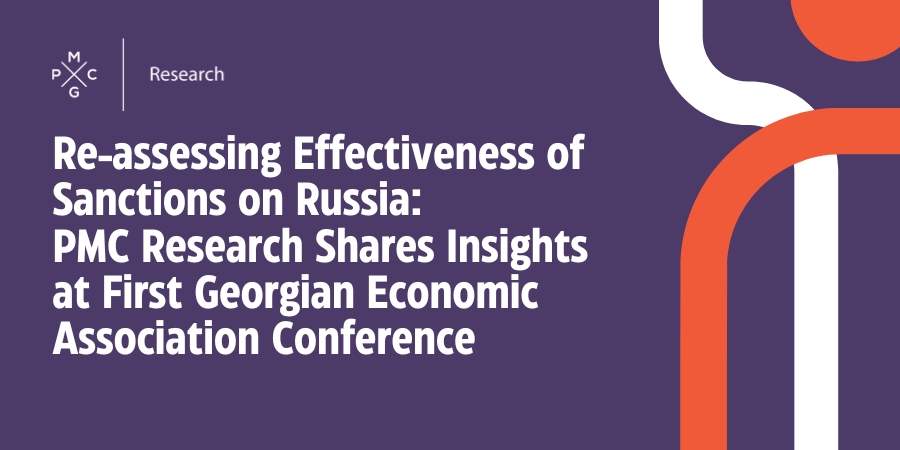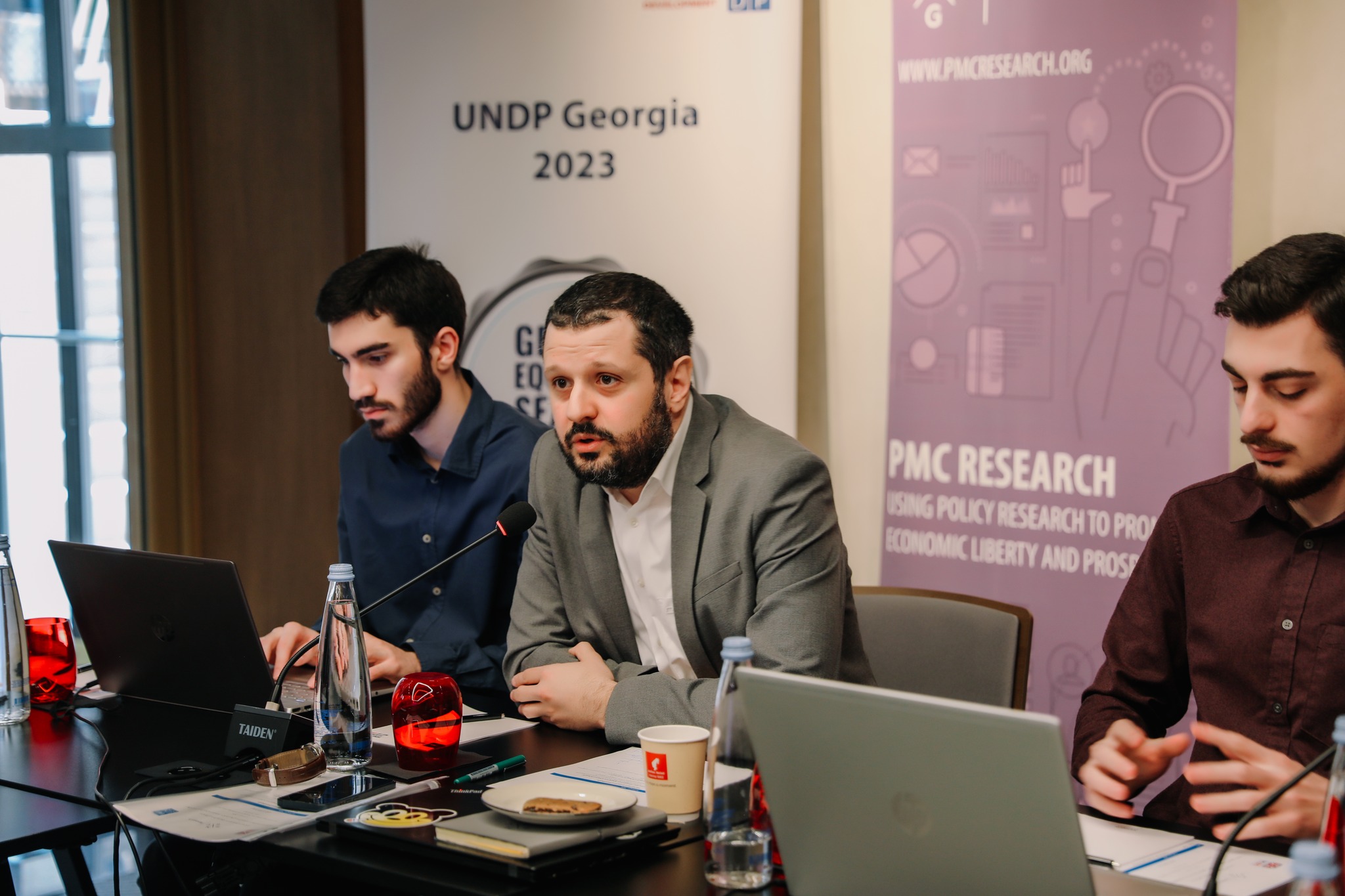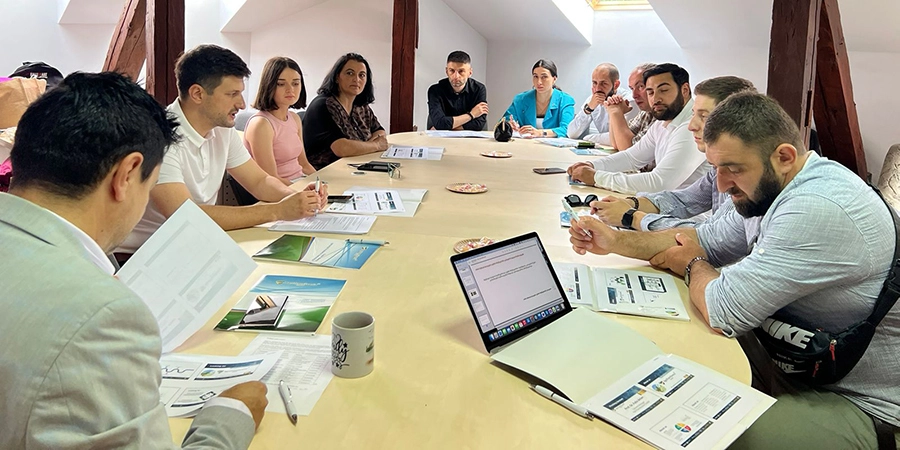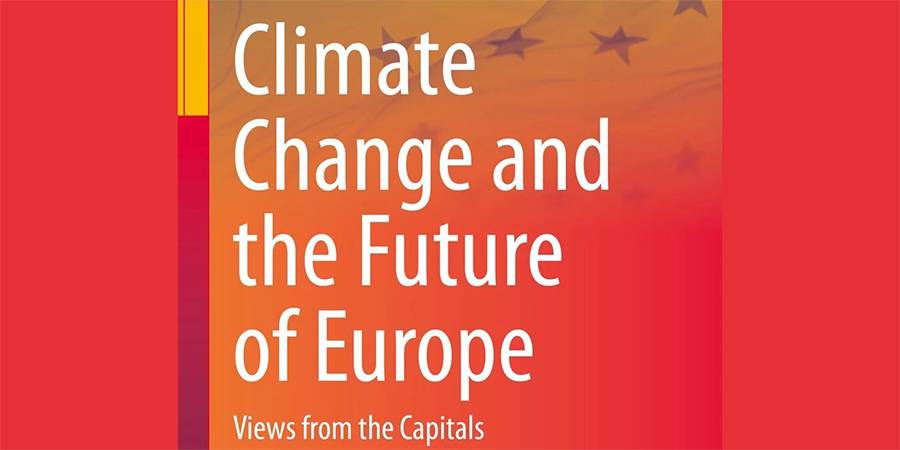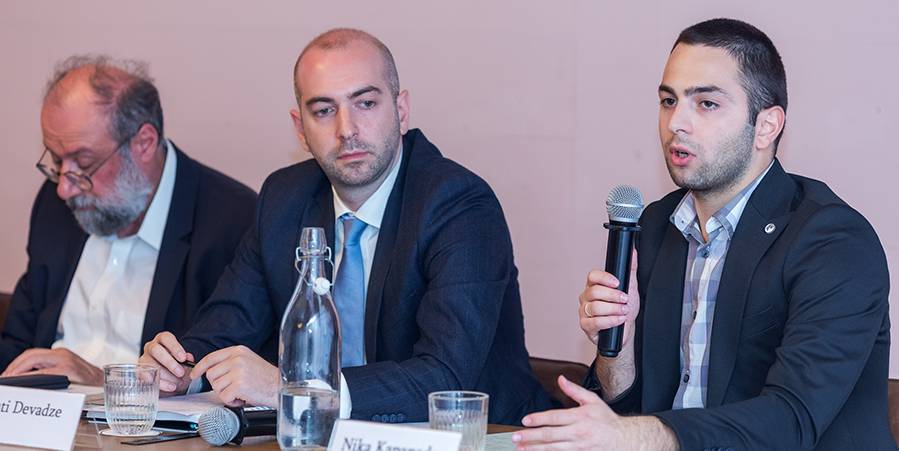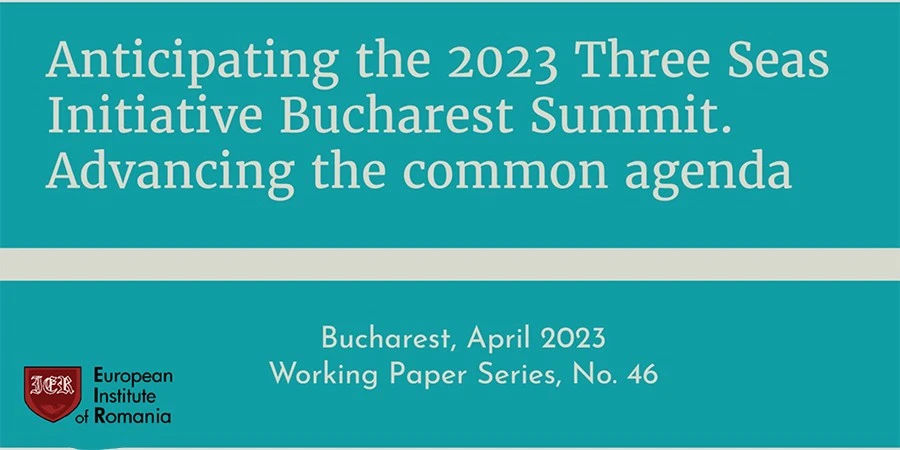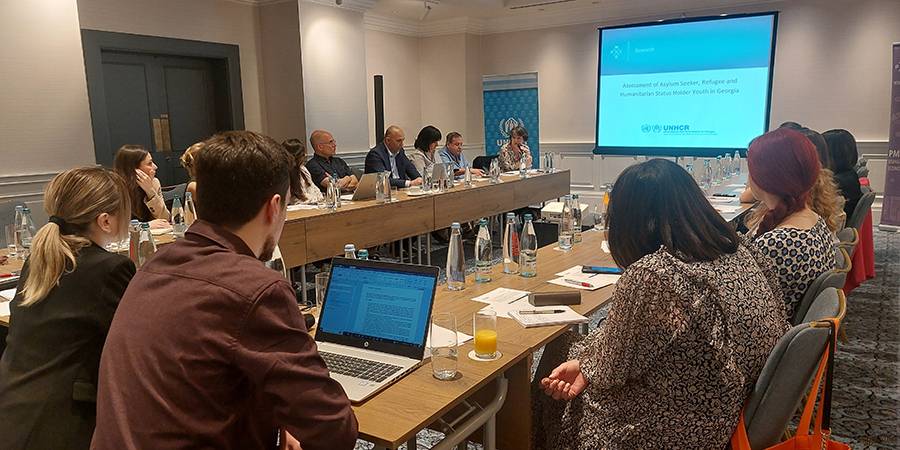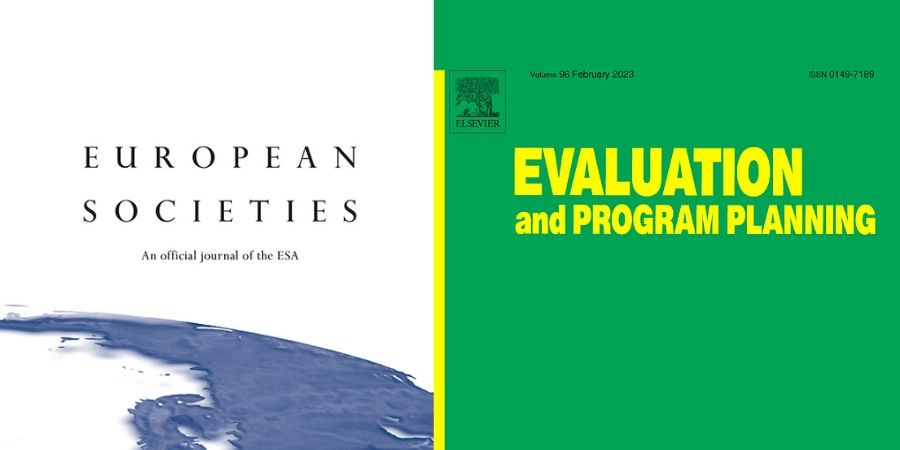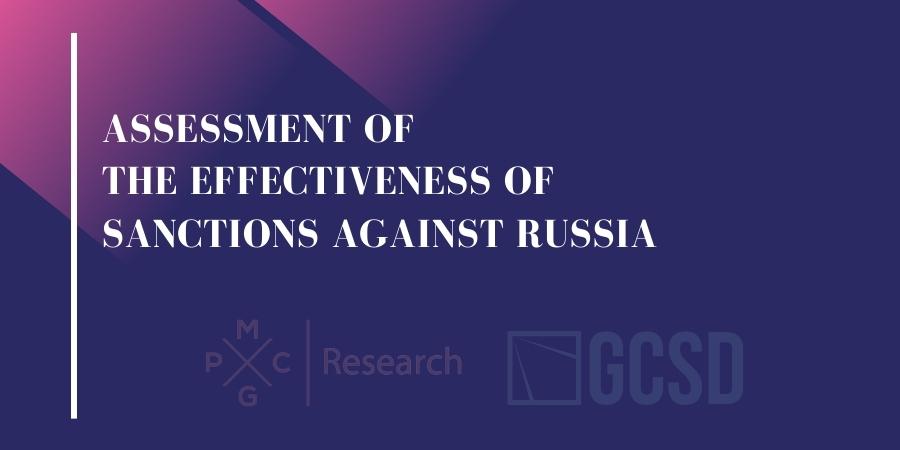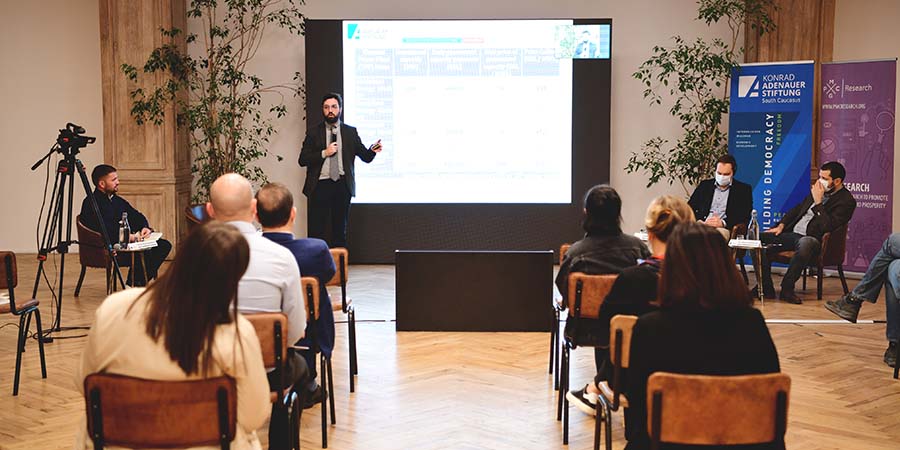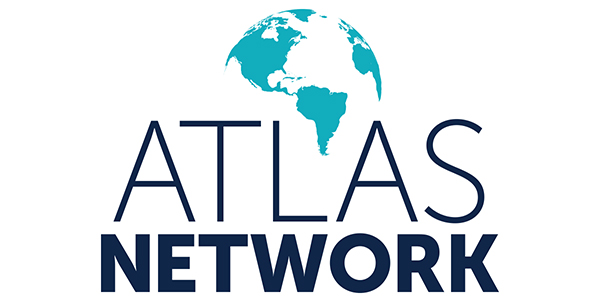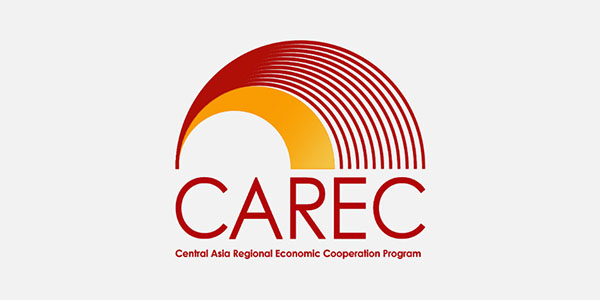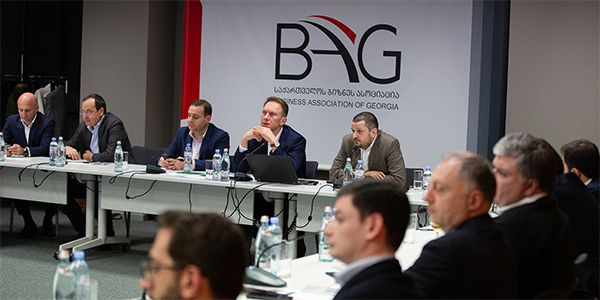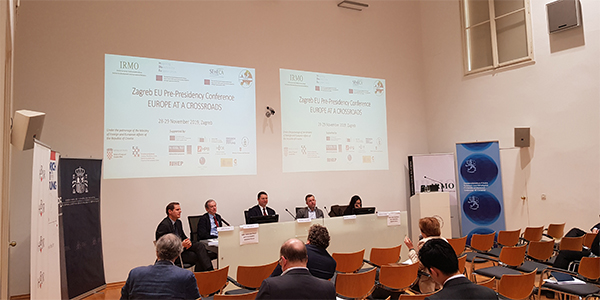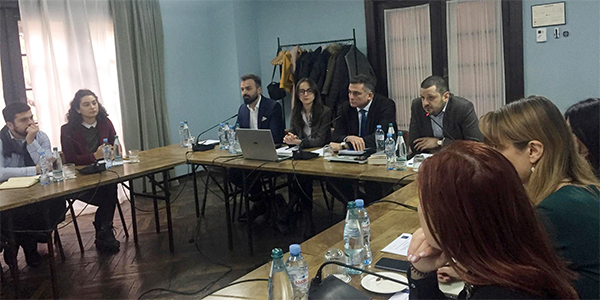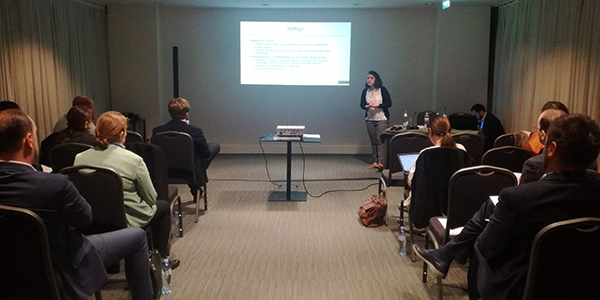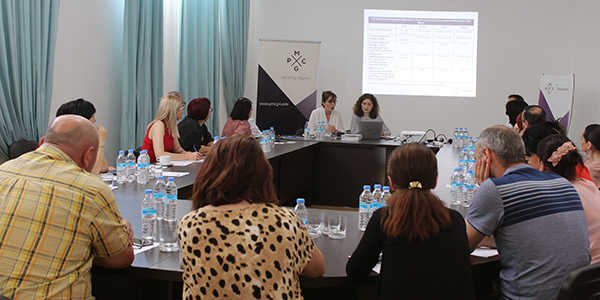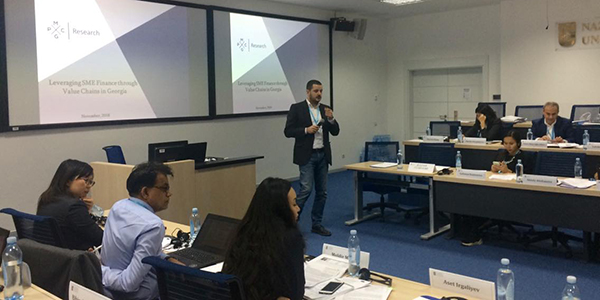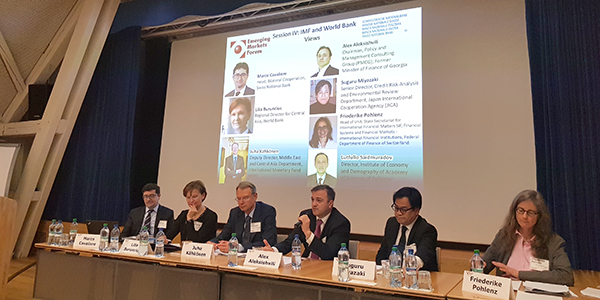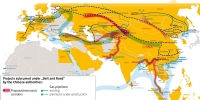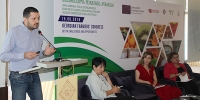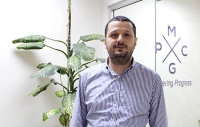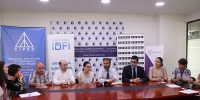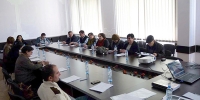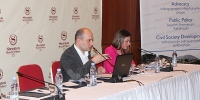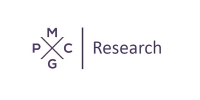PMCG-Affiliated Researchers Author Paper in New Black Sea Geopolitics Initiative
22-May-2025
Recently a new project has been launched under the Transatlantic Leadership Network, titled “Russian Intentions and Actions in the Black Sea.” This initiative takes a deep dive into Russia’s strategic goals in the Black Sea region, the tools it uses to project influence, and what actions it may pursue during and after the war in Ukraine.
PMCG-affiliated researchers – Giorgi Khistovani, Gocha Kardava, and Irakli Sirbiladze – contributed to one of the project’s papers:“The Black Sea’s Evolving Geopolitical and Economic Role for Russia Post-Ukraine Invasion.”
This insightful analysis examines:
How Russia’s geopolitical and economic priorities in the Black Sea have shifted,
The changing trade dynamics in the region,
And how Moscow’s influence is weakening under the pressure of sanctions and the ongoing war -leading to increased reliance on regional actors like Turkey and Azerbaijan.
PMC Research Hosts “InvigoratEU: Invigorating Enlargement and Neighbourhood Policy for a Resilient Europe” Project Conference
18-Mar-2024
On 20-21 February, we hosted the “InvigoratEU: Invigorating Enlargement and Neighbourhood Policy for a Resilient Europe” project’s kick-off conference in Tbilisi, Georgia, bringing together 18 leading European research organizations, all of which are members of a consortium led by the University of Duisburg-Essen.“InvigoratEU,” a project coordinated by the EU-Chair at the University of Duisburg-Essen and the Institute of European Politics, sets out to explore how the EU ought to navigate its future relations with countries of the Eastern Partnership (EaP) and the Western Balkans.
PMC Research Contributes to TEPSA’s “Enlargement and the Future of Europe” Book
13-Feb-2024
PMC Research recently made a significant contribution to the Trans European Policy Studies Association’s (TEPSA) book, entitled Enlargement and the Future of Europe. Notably, researchers Elene Panchulidze and Irakli Sirbiladze (both of PMC Research), along with TEPSA’s Mariam Khotenashvili, co-wrote the compelling “Seizing the EU Enlargement Momentum: Georgia’s Prospects for Joining the European Family” chapter. Specifically, the chapter focuses on Georgia’s relations with the European Union (EU).
Supporting the Georgian Retail Sector's Development
22-Dec-2023

On December 8, PMC Research presented the findings of a study on the retail sector in Georgia, funded by the Retail Association. In particular, the study analyzed the significance of this sector in the Georgian economy, reviewed sector dynamics, and identified existing challenges and opportunities for development.
During the presentation, PMC Research delivered a comprehensive overview of the retail industry in Georgia, outlining key findings and offering research-based recommendations. Furthermore, the entire value chain of the sector was outlined and financial indicators were analyzed accordingly.
At the presentation were representatives of the public and private sectors, whose attendance was hoped to foster collaboration to develop the sector further.
Globally, the retail industry is one of the most important economic drivers. A vibrant retail trade sector leads to increased consumption, optimization of production processes, agricultural development, and improved quality of delivery logistics. Ultimately, a well-developed retail sector contributes to economic growth job creation in adjacent sectors.
Fostering Local Tourism Development
15-Nov-2023
At the “Standards in Tourism” annual international conference, Dr. Giorgi Khishtovani, Director of Research and Analytics at PMCG, delivered a talk on local tourism development through business cluster creation. Significantly, the event brought together tourism professionals from across the world to discuss standards and regulations in the industry. Drawing from experience with the EU-supported tourism cluster in Oni municipality, Khishtovani shared valuable insights on fostering economic growth at the local level.
New Research Fuels Georgia's Public Administration Reform
10-Nov-2023
On October 20, PMC Research revealed the results of the “Challenges and Forms of Labor Relations in Georgia's Public Service” study. It examined the challenges faced by state agencies regarding various forms of labor relations, and embraced the perspectives of multiple stakeholders.
Study Tour Strengthens Oni Municipality: Exchanging Expertise with Latvia's Enter Gauja Cluster
19-Oct-2023
On 3-8 October 2023, with EU support, a delegation representing the Oni Tourism Cluster, Oni Municipality City Hall, and PMC Research visited Gauja National Park, Latvia. During the visit, experiences were exchanged with the Enter Gauja Cluster. Importantly, the study tour was part of the EU-funded “Economic Development of Oni Municipality via Business Cluster Creation and Investment Attraction” project.
EU Supports Georgian and Romanian Agri-food Clusters to Share Experiences on Study Tour
05-Sep-2023
On 24-28 July 2023, with EU support, a delegation representing the Oni Food Industry Cluster, Oni Municipality City Hall, and PMC Research visited Cluj-Napoca, Romania, to exchange experiences with the AgroTransilvania Cluster. The study tour was part of the EU-funded project “Economic Development of Oni Municipality via Business Cluster Creation and Investment Attraction.”
The EU Provides Strong Backing for Enhancing Oni Municipality’s Representation in Attracting Foreign Direct Investment
01-Sep-2023
On July 17-21, PMC Research, with EU support, conducted training sessions on foreign direct investment (FDI) attraction for representatives of local governments of Oni municipality. The training was part of the EU-funded “Economic Development of Oni Municipality via Business Clusters Creation and Investment Attraction” project. The training aimed to improve the capacities of local officials in making the municipality more visible and attractive to potential investors.
PMC Research Contributes to TEPSA's Book on Climate Change and Europe's Future
30-Jun-2023
PMC Research recently contributed to the Trans European Policy Studies Association’s (TEPSA) book, entitled Climate Change and the Future of Europe. Notably, its researcher Tinatin Akhvlediani wrote the chapter, “Georgia: It Is Time to Address the Devastating Effects of Climate Change.” Specifically, the chapter focuses on climate change effects in Georgia.
Georgia and Black Sea-Caspian Trade and Energy Connectivity
09-Jun-2023
On June 2, PMC Research’s Nika Kapanadze participated in the "Georgia and Black Sea-Caspian Trade and Energy Connectivity" roundtable. The event was part of the "GIP-KAS Foreign Policy Talks" project, supported by KAS South Caucasus Office. It focused on exploring Georgia's strategic geographical position and its trade and energy connectivity potential.
Georgia's Potential Membership in Three Seas Initiative (3SI)
09-Jun-2023
PMC Research recently contributed to a collaborative report in anticipation of the Three Seas Initiative Bucharest Summit," prepared by the European Institute of Romania (EIR). The Three Seas Initiative (3SI) aims to enhance connectivity and cooperation in the Baltic, Black, and Adriatic Sea regions. In the report, PMC Research focuses on Georgia's potential future membership in the 3SI.
Assessment of Refugee Youth in Georgia
31-May-2023
On May 25, PMC Research presented the findings of a study titled “Assessment of Youth Seeking Asylum, Refugees, and Humanitarian Status-holders in Georgia.”
The study was initiated and funded by the United Nations High Commissioner for Refugees (UNHCR) in Georgia and assessed the current situation, including access to rights and services, for asylum seekers, refugees, and humanitarian status-holder youth aged 14-29 in Georgia.
Enhancing the Crypto Regulatory Environment
13-Apr-2023
On April 6th, PMC Research presented the results of its study “Stablecoins in Georgia: International Regulatory Practices and Policy Recommendations for the Georgian Government” and held a public-private discussion thereon.
\
A Roundtable Discussion of the Study of the Needs of Ukrainian Refugees in Georgia
01-Mar-2023
On February 21st, PMC Research held a roundtable discussion of the “Study of the Needs of Ukrainian Refugees in Georgia.”
The study was carried out with the support of the Konrad Adenauer Foundation (KAS) and aimed to assess Ukrainian refugees' needs, education level, and skills, as well as the labor market integration processes they encounter in Georgia. The ultimate goal of the study was to produce recommendations for stakeholders to develop needs-based services and support Ukrainian refugees in their integration into the Georgian labor market.
Presenting a Study of the Needs of Ukrainian Refugees in Georgia
08-Feb-2023
On February 3rd, PMC Research Center held a roundtable discussion of its Study of the Needs of Ukrainian Refugees in Georgia.
The study was carried out with the support of the Konrad Adenauer Foundation (KAS) and aimed to assess Ukrainian refugees' needs, education, and skills, as well as the processes they undertake to integrate into the labor market in Georgia. The ultimate goal of the study was to produce recommendations for stakeholders to develop needs-based services and support Ukrainian refugees’ seeking employment in Georgia.
Maritime Trade in the Black Sea in the Context of the Russo-Ukrainian War
01-Feb-2023
On January 27th, PMC Research Center presented the results and held a public discussion on its “Maritime Trade in the Black Sea in the Context of the Russo-Ukrainian War” study.
The study was carried out with the support of the Konrad Adenauer Foundation (KAS) and aimed to assess the state and needs of maritime trade in the Black Sea amid the Russo-Ukrainian war and to produce respective policy recommendations.
EU-supported Tourism and Food Industry Clusters Established in Oni Municipality
25-Jan-2023

In November and December of 2022, as part of the project “Economic Development of Oni Municipality via Business Clusters Creation and Investment Attraction” implemented under the European Union (EU) initiative “Mayors for Economic Growth,” tourism and food industry clusters were registered in Oni Municipality.
In particular, the tourism cluster was founded by 18 enterprises including guesthouses, restaurants, crafts people, and tourism service providers.
The tourism cluster has the following goals:
Improving the attractiveness of Oni Municipality to tourists;
Diversifying tourism services and offers;
Supporting the development of sustainable tourism;
Improving the tourism infrastructure;
Enhancing human resources by developing knowledge and capacities;
Improving access to finance;
Improving access to inputs;
Developing inter-sectoral linkages; and
Providing information and services to cluster members.
“The creation of a tourism cluster will support the realization of Oni Municipality’s potential in the fields of balneological and health, adventure, ethnocultural, gastronomy, and cultural tourism. This will positively affect the competitiveness of SMEs, support job creation, attract investments, and improve the social and economic conditions in the municipality,” said Manana Bolkvadze, manager of the tourism cluster.
Meanwhile, the food industry cluster was founded by 15 enterprises, representing a variety of trades including beekeeping, cattle-breeding and fruit-growing.
The food industry cluster has the following goals:
Increasing the popularity and sales of food products produced in Oni Municipality;
Improving labor force capacities;
Supporting the development of bio enterprises;
Improving access to finance;
Improving local intersectoral linkages; and
Providing information and services to cluster members.
“Forming a food industry cluster is an important step in the acceleration of the sector’s development, as the cluster will support improvements with regard to SMEs’ competitiveness, job creation, and access to finance, while also stimulating the development of the innovative capacities of entrepreneurs and contributing the to economic prosperity of the Oni Municipality,” said Tengiz Akobia, manager of the food industry cluster.
3rd Meeting of the ICT Sector Public-private Partnership (PPP) Platform
27-Dec-2022
On December 20, we, in the course of the USAID Economic Governance Program, in partnership with the Vocational Skills Agency, held the 3rd meeting of a public-private partnership (PPP) platform on information and communications technology (ICT). The meeting was part of the “Piloting New Public and Private Sectors’ Collaboration Mechanism for VET Program Development” project.
Capacity Development Activity for the Parliament Research Center
10-Dec-2022
On December 6, we held a methodological seminar with representatives of the Regional Policy and Self-Government Committee of the Parliament of Georgia, the Parliament Research Center, and the Mountainous Regions Strategic Development Coordinating Council of Administration of the Government of Georgia as part of the “Capacity Development Activity for the Parliament Research Center” project, which is being implemented by the Parliament of Georgia with financial support from the Embassy of Switzerland in Georgia.
Developing Statutes for Tourism and Food Industry Clusters
17-Oct-2022
On September 30 and October 1, we held workshops with representatives of the tourism and food industry sectors from Oni Municipality, as part of the project “Economic Development of Oni Municipality via Business Clusters Creation and Investment Attraction” implemented under the European Union (EU) initiative “Mayors for Economic Growth.”
Supporting Skills Development of Rural Populations
14-Sep-2022
PMC Research Center (PMC RC), with support from the EU and the United Nations Development Programme (UNDP) under the European Neighborhood Programme for Agricultural and Rural Development (ENPARD), recently started a new project entitled “Development of Skills for Rural Vulnerable Groups,” aimed at helping disadvantaged rural populations to find suitable employment by acquiring skills and knowledge currently in-demand on the local labor market
ICT Sector Public-private Partnership (PPP) Platform Meeting
30-Jul-2022
On July 26, we, in partnership with the Vocational Skills Agency and with the support of the USAID Economic Governance Program, held the second meeting of a public-private partnership (PPP) platform on information and communications technology (ICT), aimed at addressing the skills mismatch in this sector. The meeting was part of the project “Piloting New Public and Private Sectors’ Collaboration Mechanism for VET Program Development.”
Supporting Rural SMEs in their Digital Transformation
08-Jul-2022
On July 1-3, PMC Research Center (PMC RC), with support from the EU and the United Nations Development Programme (UNDP) under the European Neighborhood Programme for Agricultural and Rural Development (ENPARD), conducted digital transformation training for local SMEs in Khulo Municipality as part of a project entitled “Development of Digital Transformation Support for Rural SMEs,” funded by UNDP.
Assessment of the Effectiveness of Sanctions Against Russia
17-May-2022
On May 5, PMC Research Center in collaboration with the Georgian Center for Strategy and Development (GCSD) conducted a presentation and panel discussion entitled “Assessment of the Effectiveness of Sanctions Against Russia.”
Supporting Ethnic Minority Participation in the Civil Service
11-May-2022
On May 3, we participated in an event entitled “Diversified and Inclusive Civil Service” and presented the findings of the “Taking Stock of Ethnic Minority Participation in the Public Service” research, aimed at assessing the representation of ethnic minorities, in particular Azeri- and Armenian-speaking groups in the civil service and identifying barriers that limit their active engagement in this sector.
Barriers to Completion of PhD Studies in Georgia
14-Apr-2022
On April 7, PMC Research Center (PMC RC) held a presentation and panel discussion on the findings of its research entitled “Barriers to Completion of PhD Studies in Georgia,” the aim of which was to improve understanding of the challenges faced by doctoral students who are on academic leave and to offer corresponding policy recommendations.
Uncovering the State of Play of Faculty Professional Development in Georgian Higher Education Institutions
17-Mar-2022
On March 10, PMC Research Center held a presentation and public discussion on the findings of its research entitled “Uncovering the State of Play of Faculty Professional Development in Georgian Higher Education Institutions,” which explored the professional development opportunities for academic staff at Georgian public higher education institutions (HEIs), analyzed their implementation and effectiveness from the perspective of the HEIs and academic staff, and revealed the ways through which these can be advanced to better serve the development goals and priorities of HEIs and faculties.
Discussing Georgia’s Energy Security and Electricity Market Prices
27-Dec-2021
On December 16, PMC Research conducted a presentation and public discussion on the findings of its research entitled “Electricity Market Prices and Georgia’s Energy Security,” which was aimed at drawing attention to the issue of electricity prices, their importance in energy security, and electricity supply security.
Conducting a Country Study on Labor Migration Management
25-Nov-2021
PMC Research Center recently started working on new research under the project “Sustainable and Socially Acceptable Labour Migration Management” being implemented by the University of Applied Sciences Bonn-Rhein-Sieg (H-BRS) along with the German Agency for International Cooperation (GIZ) in Georgia, Germany, Kosovo, and Vietnam, and funded by the German Federal Ministry for Economic Cooperation and Development (BMZ).
Tourism Sector Challenges and Recommendations
05-Nov-2021
On September 29, the Kazakh-Georgian Economic Union, with the support of PMC Research Center, held a meeting assessing the importance and prospects with respect to Kazakh tourists visiting Georgia. A hybrid event brought together representatives of the public and private sector engaged in tourism, while other people interested in the sector’s development also attended in an online format.
Enhancing Agribusiness Clustering to Boost Georgia’s Sustainable Economic Development
02-Apr-2021
PMC Research recently finished a diagnostic study of two clusters of two regions of Georgia - the processing and preservation of fruits and vegetables cluster in Guria, and the poultry cluster in Kvemo Kartli - in order to contribute to their development and promotion, which is beneficial for the private sector’s enhancement, as it can boost productivity and advance innovation.
Project in Racha Sets Ground for Full Local Youth Engagement
23-Mar-2021
Recently, we completed a project entitled Supporting an Inclusive Youth Policy by Establishing Sustainable Youth Platforms and Promoting Non-formal Education in Racha, in the course of which we established the Youth Assembly in the Racha-Lechkhumi and Kvemo Svaneti region of Georgia, which conducts various activities dedicated to providing youth with opportunities, experiences, and the necessary theoretical and practical skills and competencies to support their full and successful integration into society. Such efforts were designed to enable them to become involved in decision-making processes at the local level through civic engagement mechanisms.
Sharing the Results of Our Research on Georgia’s Artificial Intelligence (AI) Readiness
16-Mar-2021
Artificial intelligence (AI) is increasingly becoming a part of our everyday lives, offering tremendous benefits for societies in terms of public governance, business development. and healthcare. However, it also raises some important economic, legal, and ethical questions. Hence, while governments have to create an AI-friendly eco-system, attract AI investors, boost the development of AI technologies, increase the industrial application of AI and, therefore, enhance AI-generated economic and social welfare overall, they should also elaborate policy frameworks to balance AI-associated risks that might be related to personal data protection, targeting, algorithmic discrimination, cybersecurity, and/or AI liability.
ADBI Publishes PMC Research Paper on SME Finance in Georgia
01-Feb-2021
The Asian Development Bank Institute (ADBI) recently included a paper by PMC Research on the status of SME finance in Georgia as one of the chapters of its publication entitled “Leveraging SME Finance through Value Chains in CAREC Landlocked Countries”.
Presenting the Shortfalls of Deliberative Democracy in Mestia Municipality
22-Dec-2020
On December 17, PMC Research conducted an online presentation of a research report entitled “Shortfalls of Deliberative Democracy in Rural Georgia: Analysis of the General Assembly of a Settlement in Mestia Municipality,” prepared by PMC Research as part of the project “Public Policy Discourse and Dialogue Platform” project, with the support of PMCG.
Diagnosing Two Clusters of Two Regions of Georgia to Support Business Sophistication
08-Nov-2020
PMC Research is studying the current situation in two clusters - the processing and preservation of fruits and vegetables cluster in Guria, and the poultry cluster in Kvemo Kartli - to analyze current business operations, to develop a cluster map and, finally, to elaborate both short-term objectives and a long-term vision for the development of the clusters.
Assessing digital learning readiness in Georgia’s public sector
06-Nov-2020
In response to the Civil Service Bureau’s initiative to create a unified online learning platform for civil servants, PMC Research is starting a new project under UNDP’s “Supporting Public Administration Reform of Georgia” program to assess the digital learning readiness of civil servants in Georgia. The research team will employ a mixed-method research design, integrating quantitative and qualitative methods to identify potential challenges posed by the shift to online learning and then preparing relevant recommendations.
Georgia’s Economic Growth: Identifying Industry-related Challenges and Opportunities
27-Oct-2020
We recently started a new project, which aims at conducting value chain analytics of selected industries (tourism, creative industries, light manufacturing, and shared intellectual services) of Georgia. The main goal of the activity is to understand recent developments, tendencies, and needs, which together serve as a basis for the decision-making processes of the relevant public bodies and will, in turn, strengthen the economic potential of each targeted value chain.
Evaluation to Enhance Future Implementation of LEADER Approach in Georgia
25-Oct-2020
We recently started evaluating a project entitled “Promoting Citizen Engagement for Economic Development (PROCEED)” aimed at addressing the challenges associated with poverty and unemployment in Dedoplistskaro municipality in the Kakheti region of Georgia and enhancing the wellbeing of its population through applying the LEADER/Community-Led Local Development (CLLD) methodology.
PMC Research Advancing Inclusive Youth Policy in Racha
01-Oct-2020
We recently established a sustainable youth platform in Racha-Lechkhumi and Kvemo Svaneti to provide youth with opportunities, experiences and the necessary theoretical and practical skills and competencies to support their full and successful integration into society and, accordingly, to enable them to get involved in the decision-making processes at the local level through civic engagement mechanisms.
Identifying Mestia Municipality’s Community Needs to Support Rural Development
04-Apr-2020
We recently elaborated a new report entitled “High-Priority Community Problems in Mestia Municipality.”
The aims of the document are: to introduce forms of civic engagement within local self-governance processes serving citizens of the 16 communities of Mestia municipality; to enhance their capacity in local budget analysis; to enable them to distinguish between central and local government competences; and to improve the ways in which they overcome local challenges.
Enhancing Capacity of Georgian Farmers’ Association
08-Jan-2020
We are working with the Georgian Farmers’ Association (GFA) to support the strengthening of its internal capacity, aiming to increase its membership base, financial sustainability and independence.
Supporting Growth of Rural SMEs in Georgia and Armenia
19-Dec-2019
We recently completed a research project, aimed at identifying constraints affecting the development of rural small and medium enterprises (SMEs) in Georgia and Armenia, and ascertaining how these can be overcome.
Evaluating Progress of Penitentiary and Probation Reforms
03-Dec-2019
We recently started working on a European Commission project focused on monitoring and assessing the implementation of the Strategy and 2019-2020 action Plan for the Development of Penitentiary and Crime Prevention Systems in Georgia.
PMC Research Elected as Fully-Fledged Member of Trans European Policy Studies Association (TEPSA) at Pre-presidency Conference in Zagreb
29-Nov-2019
We can happily announce that PMC Research has become a fully-fledged member of the Trans European Policy Studies Association (TEPSA) through which it will actively contribute to the work and development of the organization. It is both a great honor and responsibility for PMC Research which becomes the first member organization from the South Caucasus. Indeed, even among Eastern Partnership Countries (EAP) PMC Research is only the second organization to enroll as a member of the TEPSA. PMC Research’s admission to the TEPSA was confirmed at its pre-presidency conference.
Our Academic Publication in Latest Edition of Caucasus Analytical Digest
19-Nov-2019
It is with great pride that we can announce that our recent academic publication entitled “Connectivity, Trade and Financial Integration of the South Caucasus via the Belt and Road Initiative (BRI)” has been published in the latest edition of the Caucasus Analytical Digest (CAD).
PMC Research Gains New Regional Partner in Ukraine
18-Nov-2019
We are pleased to announce that PMC Research has a new regional partner, namely the Institute for Economic Research and Policy Consulting, a highly reputable and independent think-tank operating in Ukraine.
Analyzing Labor Migration Trends
17-Sep-2019
On September 9, we presented the findings of our latest research project entitled “Labor Migration and Private Employment Agencies in Georgia.”
Advancing Communication Capacity of LAG Members
31-Jul-2019
On July 22-26, a training module was conducted for potential members of the local action group (LAG) Mestia in order to enhance their communication skills through social media.
Analyzing the Diversification of the Rural Economy in Georgia
16-Jul-2019

At the end of June and the beginning of July, PMC Research conducted three presentations and public discussions on the outcomes of the policy brief “Diversification of Rural Economy in Georgia” in Mtskheta, Tkibuli, and Batumi.The main goal of the research was to study the current state of affairs in the rural economy and to identify steps towards its diversification by analyzing the vision, strategy and programs of the Government of Georgia, as well as regional and municipal authorities. We evaluated the development potential of linkages between farm and non-farm sectors and basic factors supporting the diversification of the rural economy.“Economic diversification of the rural economy has the potential to significantly alleviate poverty and contribute to local and regional economic development in Georgia,” said Mikheil Skhiereli, Affiliated Researcher at PMC Research. Civil society organizations and representatives of local governments also participated in the discussion. The research was conducted by PMC Research in collaboration with People in Need, as part of the EU project “Regional Civil Society Organizations Supporting Free Trade with Europe.”
Promoting Rural Development in Mestia
11-Mar-2019
We have recently launched a new project “Support to the Development of Livelihoods in Disadvantaged Rural Regions of Georgia – Mestia/Samegrelo - Upper Svaneti Region” in order to promote rural development in the municipality of Mestia in Georgia.
Hosting Delegation from China to Start Collaboration
08-Nov-2018
On November 6-7, PMC Research hosted a delegation from China, comprising high-ranking officials from the Chinese Academy for Fiscal Sciences (CAFS). The aim of the visit was to discuss the prospects of future collaboration between the two institutions.
Enhancing the Vocational Education and Training System in Georgia
22-Oct-2018
PMC Research recently launched a new project entitled “Updating Vocational Education and Training (VET) System in Georgia with Estonian Experience” aiming to develop VET programs to become more attractive in Georgia and to prepare students to meet the needs of the local labor market.
Supporting Government of Georgia to Enhance Human Capital
24-Sep-2018
We are honored to be supporting the Government of Georgia (GoG) to implement its role as an “Early Adopter,” as part of a World Bank (WB) initiative aiming to encourage investment in people to boost sustainable economic growth.
PMCG and PMC Research Open Call for Policy Papers
16-May-2018
PMC Research has launched a project entitled “Public Policy Discourse and Dialogue Platform – 2018” targeted at creating a platform to stimulate constructive and systematic policy debates and to establish cooperative practice among different political and social groups of Georgian society.
Ifo World Economic Survey (Third Quarter of 2017)
04-Dec-2017
In November 2017, ifo published its World Economic Survey for the third quarter of 2017. In the report, among other countries, Georgia’s current economic situation was assessed and predictions were made.
Product Selection for Value Chain Analysis Discussed in Adjara
29-Sep-2017
On September 23, PMC Research hosted a working meeting to discuss and select the most valuable agricultural product for Adjara in order to conduct a value chain analysis (VCA), as part of the European Commission (EC) project “Regional Civil Society Organizations as Vectors of Rural Economic Development”.
Georgian-German Startup Forum
11-Sep-2017
On September 4, Georgian-German Startup Forum was held at Technopark, organized by PMC Research in collaboration with Georgia’s Innovation and Technology Agency (GITA). The event aimed to facilitate the sharing of knowledge and experience regarding entrepreneurship and was part of the Germany-Georgia Friendship Year, supported by the German Embassy in Georgia and Procredit Bank.
Welcoming Our New Research Director
29-Jun-2017
We are delighted to welcome Giorgi Khishtovani to our team, as our new Research Director. Giorgi brings with him eight years of sound experience in public, private and non-governmental sectors in Georgia and abroad, as a lecturer, trainer, consultant, researcher, and project manager.
Enhancing Role of CSOs in Georgia in Regional Economic Development Process
23-Jun-2017
PMC Research, in cooperation with People in Need (PIN), the Rural Communities Development Agency (RCDA), and Association ATINATI, is working under the European Commission project - Regional Civil Society Organizations as Vectors of Rural Economic Development - to promote rural economic development and stimulate the agricultural sector in Georgia.
Promoting Rural Development in Khulo Municipality
20-Jun-2017
PMC Research, as part of a European Commission project, has started working together with Caritas Czech Republic and the Croatian Rural Development Network to promote rural development and diversification in the municipality of Khulo in Georgia.
Increasing Transparency of Public Spending in Georgia
18-Jan-2017
Policy and Management Consulting Group (PMCG) has recently launched a project - Partnership for Budget Transparency: Civil Society Oversight of Public Spending in Georgia, funded by Europe Foundation, focused on enhancing civil society engagement in Georgia regarding budgeting process.
We are Awarded for the Highest Level of Transparency
30-Jun-2016
We are excited to share the news that PMC Research Center (PMC RC) was recently granted a 5 star transparency award. It is a great honor for us to be awarded by international organization Transparify for setting the gold standard for the field as a whole, by reflecting exemplary transparency in publicly disclosing sources of funding.
Welcoming Our New Research Director
14-Mar-2016
We are very pleased to welcome Maya Grigolia to our team as our new Research Director after the position was vacated by Tamar Jugheli who is pursuing her PhD in Germany.
We Have Moved to a New Office
22-Sep-2015
We are excited to announce that we have moved to a new office at 61 Aghmashenebeli Avenue in Tbilisi (Georgia). We enjoyed three successful and hard-working years in the old...
Zaza Chelidze Discusses Challenges of EU Accession at International Conference in Kosovo
25-May-2015
On May 15-16, Zaza Chelidze, Member of PMC RC's Advisory Board participated in the international conference “Activating the Sources of Economic Growth in Kosovo”.
The event organized by local think-tank Riinvest Institute served as a platform for debate about the potential sources of economic growth in Kosovo.
Chelidze participated in the panel together with the Minister of Economic Development, Minister of Trade and Industry of Kosovo, and the former Minister of Finance of Albania.
His topic was “Agricultural and Rural Development in Georgia – Challenges of EU Accession” and also discussed Georgia’s successfully implemented reforms in areas including: trade liberalization, tax system simplification, deregulation and other free-market enabling reforms that resulted in Georgia being ranked very highly in The World Bank’s Doing Business, Economic Freedom Index and Corruption Perception Index.
Understanding Labor Market in Georgia
21-May-2015
PMC Research will conduct labor informality study, in partnership with the International School of Economics at Tbilisi State University, the University of Bologna, the University of Bonn and Maastricht University with the financial support of Volkswagen Foundation and the Institute for Study Labor (IZA).
PMC RC Successfully Concludes EU-Albania/Kosovo Integration Project
29-Apr-2015
The project was aimed at enabling Visegrad countries to share their experiences and to play significant roles in the process of the economic integration of both Albania and Kosovo with the EU and transfer of Georgian know-how in successful structural reforms for Albanian and Kosovar stakeholders.
Addressing Solid Waste Management Challenges in Georgia
20-Nov-2014
On November 18, PMC Research Center (PMC RC), under the umbrella of Policy and Management Consulting Group (PMCG), with the support of the Konrad Adenauer Foundation, held a presentation and public discussion of research findings and recommendations regarding “Solid Waste Management in Georgia”.
The presentation focused on construction waste, polyethylene bags, municipal dumps, as well as the separation of solid waste collection systems and the involvement of the private sector in this process.
PMC RC and KAS Continue Presentations and Public Discussions of Policy Researches for Sustainable Economic Development
17-Sep-2014
On October 3, PMC Research Center (PMC RC) together with the Konrad Adenauer Foundation organized the presentation and public discussion on two research findings and corresponding recommendations on the following issues: Effects of Clean Investment; Possible Challenges of Harmonization of Georgian Legislation with the Acquis Communautaire of the European Union in the Energy Sector. The researches were conducted in the framework of the project Policy Research for Sustainable Economic Development, which is developed by PMC Research Center, with the support of the Konrad Adenauer Foundation.
Costs and Benefits of Labor Mobility Between European Union and Georgia
17-Sep-2014
On September 30, PMC Research Center (PMC RC) together with the support of the Konrad Adenauer Foundation hosted a presentation of the research findings and held a public discussion on the Costs and Benefits of Labor Mobility between European Union and Georgia. The research was conducted within the framework of the project “Policy research for sustainable economic growth”.In particular, the research observed the advantages and challenges that may be faced by the country’s economy, after visa liberalization. The discussion was also focused on the main trends and characteristics of labor migration from Georgia. Specific attention was given to the possible influence of the Association Agreement between the EU and Georgia and visa liberalization on labor migration to the EU.
Presenting Procurement Research Findings
24-Jun-2014
On Tuesday, June 24, at the Sheraton Metechi Palace hotel, PMC Research Center (PMC RC) delivered a presentation and public discussion on “Analysis of the State Procurement System of Georgia”. The research had been conducted with the support of the USAID program - Policy, Advocacy, and Civil Society Development in Georgia (G-PAC), which is implemented by the East West Management Institute (EWMI).
PMC RC to Present Research Findings
04-Jun-2014
On June 5, PMC Research Center will present the findings of the research “Analysis of the Medium-Term Fiscal Policy Sustainability in Georgia”, which was implemented within the framework of the USAID-funded program G-PAC.
Supporting the Parliament of Georgia to Implement Sustainable Institutional Reforms
14-Apr-2014
PMC Research Center (PMC RC), an independent non-governmental think tank, under the auspices of Policy and Management Consulting Group (PMCG) will assist the Parliament of Georgia to implement sustainable institutional reforms, by facilitating the development of a comprehensive Institutional Reform Plan (IRP), program-based budgeting and introducing effective donor coordination mechanisms.
Preliminary results of ongoing research: "Analysis of the medium-term fiscal policy sustainability in Georgia"
12-Feb-2014
On Thursday, February 6, at the hotel "Sheraton Metechi Palace", a presentation and public discussion of ongoing research "Analysis of the medium-term fiscal policy sustainability in Georgia" was held. The project is prepared by PMC Research Center and is implemented in the framework of the East-West Management Institute's (EWMI) Policy, Advocacy, and Civil Society Development in Georgia (G-PAC) Program, funded by United States Agency for International Development (USAID).
The Economic Effects of Labor Market Regulations: Research Results Presentation
10-Jun-2013
On Thursday, 6 June, PMC Research Center, as part of the study funded by the Policy, Advocacy, and Civil Society Development in Georgia (G-PAC) program of the United States Agency for International Development (USAID), held public discussions on the topic: "Economic Effects of Labor Market Regulations".
PMC RC provides consultancy services to the State Competition and Procurement Agency of Georgia
10-Apr-2012
PMC Research Center is providing assistance to the State Competition and Procurement Agency (SCPA) to enhance the transparency and accountability of its operations and procurement procedures with support of USAID. This project follows up on a recently developed study into the SCPA's Dispute Resolution Board procedures, prepared by the PMC Research Center. (More information about the study is available via this link).
Working with Competition and State Procurement Agency (CSPA) of Georgia
08-Feb-2012
PMC Research Center (Member of PMC Group) has been awarded the grant by USAID for the project entitled Study to Enhance the Public Outreach Function of the Compitiion and State Procurement Agency (CSPA). PMC Research Center will work with CSPA to conduct a desk study of current operations and processes of the CSPA Dispute Resolution Board and provide recommendations to improve public outreach function of the CSPA.
PMC RC Launches Fiscal Risk Study for Georgia
14-Dec-2011
PMC Research Center (Member of PMC Group) has been awarded the grant by USAID funded G-PAC Program to conduct a comprehensive research and risk analysis of the fiscal system of Georgia in order to identify possible risks associated to the fiscal sustainability for the medium (3-5 years) and long (5-15 years) term periods. The study will evaluate the likelihood of the fiscal risks by considering 2 main directions, the decrease in budget tax revenues to GDP and increase in the public debt (including external) service.
